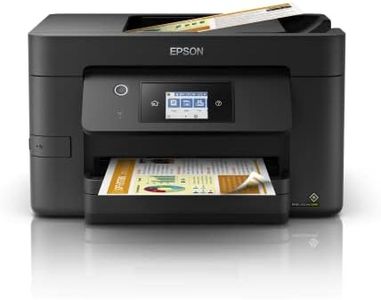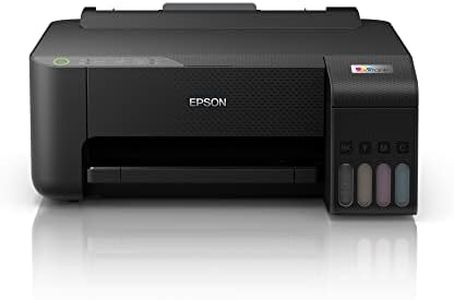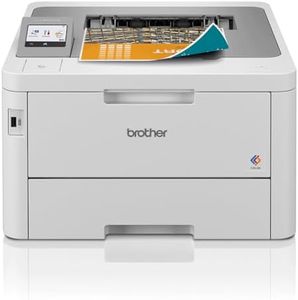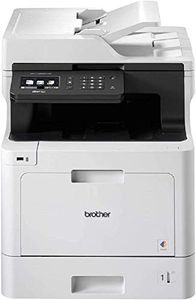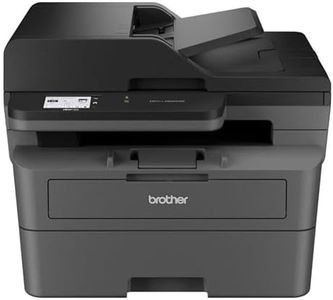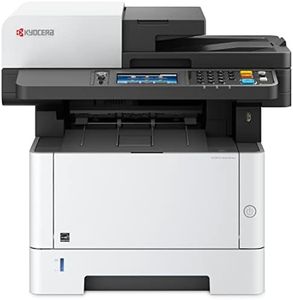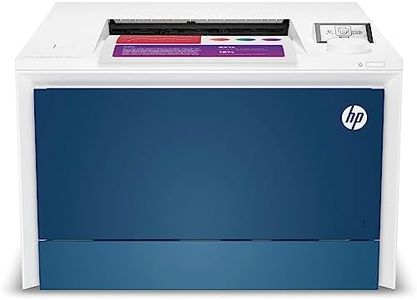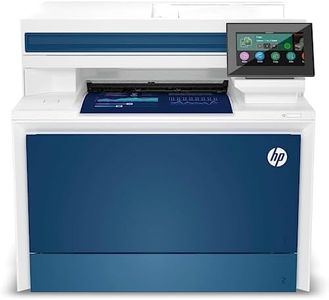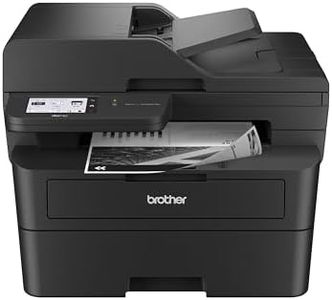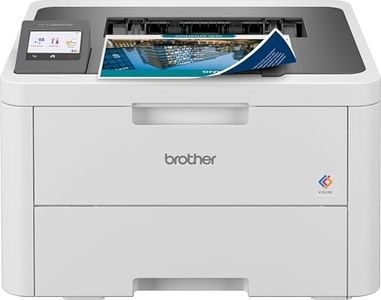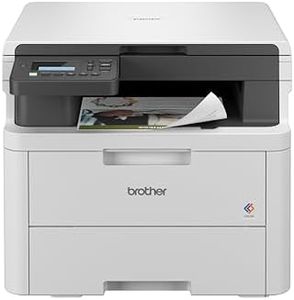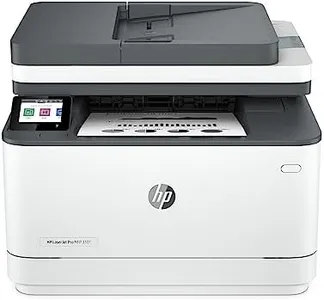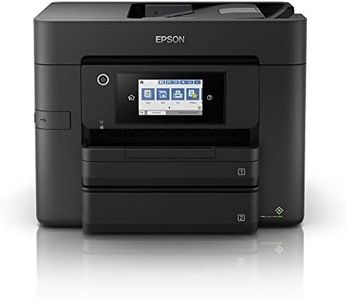We Use CookiesWe use cookies to enhance the security, performance,
functionality and for analytical and promotional activities. By continuing to browse this site you
are agreeing to our privacy policy
10 Best Laser Printers
From leading brands and best sellers available on the web.Buying Guide for the Best Laser Printers
Choosing a laser printer can feel overwhelming, but understanding your needs and learning what matters in a printer will help you make a wise decision. Start by thinking about how often you print, whether you need color or just black and white, if you need extra features like scanning or copying, and how much space you have. By focusing on these areas and understanding key technical details, you’ll find a printer that fits seamlessly into your daily life.Print Speed (Pages Per Minute, PPM)Print speed tells you how many pages a printer can output in a minute. This is important if you print in bulk or have frequent printing needs, as a higher speed means less waiting. Lower print speeds (about 15-20 PPM) are fine for occasional use and home offices, while moderate speeds (20-30 PPM) suit small businesses or groups. High speeds (above 30 PPM) are best for busy offices or someone who prints large documents regularly. Match the speed to how often you print and how much you value quick turnarounds.
Print Resolution (DPI)Print resolution, measured in dots per inch (DPI), represents how sharp and clear the prints will be. Standard resolutions (around 600 x 600 DPI) are ideal for text documents, while higher resolutions (1200 x 1200 DPI or more) create crisper images and clearer small fonts. If you mostly print text or basic forms, a standard DPI works well. For presentations, images, or professional-looking documents, choose a higher DPI to ensure everything looks clean and sharp.
Color vs. MonochromeLaser printers come as either monochrome (black and white) or color models. Monochrome printers are generally faster, less expensive to maintain, and perfect for text-centric tasks like reports and forms. Color laser printers handle graphics, charts, and photos better, making them a good choice if you need color for branding, internal documents, or presentations. Decide if color printing is something you need regularly, as color models are more complex and have higher ongoing cartridge costs.
Connectivity OptionsConnectivity covers how your devices communicate with the printer. Basic models offer USB connections for direct printing, while most modern printers feature Wi-Fi, Ethernet, or Bluetooth for wireless use. Some also support printing from smartphones or cloud services. Choose a printer that matches how and where you’ll print: if you print from multiple devices or prefer to work wirelessly, prioritize models with Wi-Fi or mobile support. For private, single-device use, USB might be enough.
Monthly Duty CycleMonthly duty cycle is the maximum number of pages a printer is designed to handle in a month without causing wear or damages. Lower cycles (up to 2,000 pages) suit personal or small office needs, while higher values (10,000+ pages) are built for busier workplaces. Estimate your typical monthly workload and pick a printer with a duty cycle comfortably above your usage to ensure reliability and longevity.
Paper Handling and SizePaper handling refers to the types and quantities of paper a printer can manage, including tray capacity and supported paper sizes. For light home use, a small tray holding 100-150 sheets should be enough. Offices with heavier needs might require trays that hold 250 sheets or more, or support for multiple trays and sizes like envelopes or legal paper. Think about what types and sizes of paper you’ll use, and pick a printer that minimizes frequent refilling or manual adjustments.
Multifunction Features (All-in-One)Some laser printers are 'all-in-one' devices, combining printing, scanning, copying, and faxing. These are handy in home and office environments where you might occasionally need to duplicate documents or scan in forms. If you already have a scanner or don’t need extra functionalities, a single-function printer might save space and simplify use. Consider the breadth of tasks you perform and choose based on what services you truly need.

